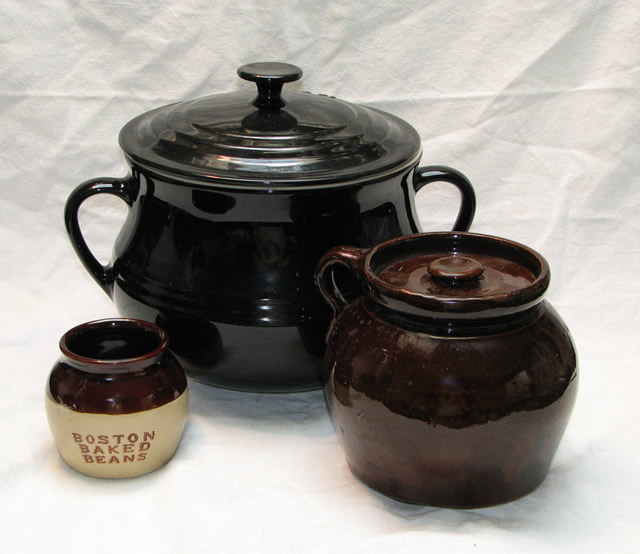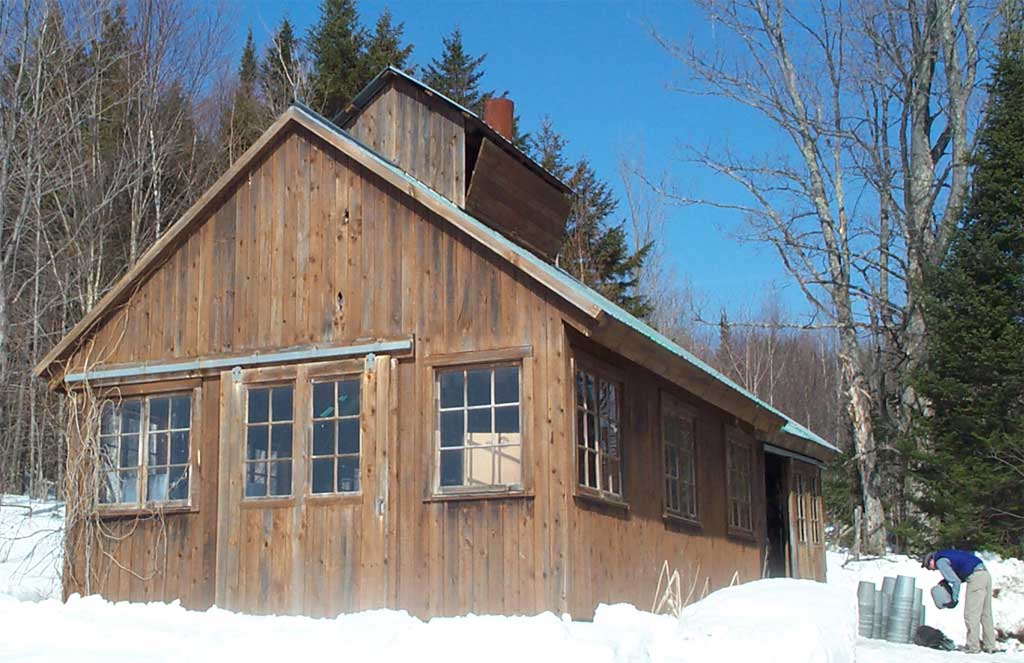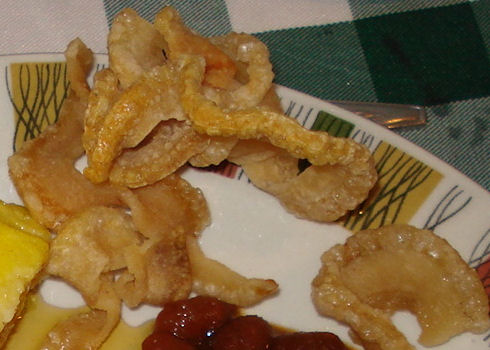|
Fèves Au Lard
Fèves au lard, also called bines or haricots au lard, is a traditional Québécois dish. It is usually beans mixed with pieces of bacon and either molasses or maple syrup that is then slow cooked in the oven. Sometimes other ingredients are added. Fèves au lard are usually served as a side during breakfast, but they can also be served as a side during lunch or supper and they can be served as a meal. Fèves au lard is a traditional dish presented at sugar shacks during le temps des sucres in Québec and other French-speaking regions of Canada. This dish was inspired by cultural exchanges between Québécois and New Englanders during the 19th century. It is believed that Boston baked beans directly inspired Fèves au lard. (consulted 2021-02-02) It is also thought that this popular recipe ... [...More Info...] [...Related Items...] OR: [Wikipedia] [Google] [Baidu] |
New England
New England is a region comprising six states in the Northeastern United States: Connecticut, Maine, Massachusetts, New Hampshire, Rhode Island, and Vermont. It is bordered by the state of New York to the west and by the Canadian provinces of New Brunswick to the northeast and Quebec to the north. The Atlantic Ocean is to the east and southeast, and Long Island Sound is to the southwest. Boston is New England's largest city, as well as the capital of Massachusetts. Greater Boston is the largest metropolitan area, with nearly a third of New England's population; this area includes Worcester, Massachusetts (the second-largest city in New England), Manchester, New Hampshire (the largest city in New Hampshire), and Providence, Rhode Island (the capital of and largest city in Rhode Island). In 1620, the Pilgrims, Puritan Separatists from England, established Plymouth Colony, the second successful English settlement in America, following the Jamestown Settlement in Virginia foun ... [...More Info...] [...Related Items...] OR: [Wikipedia] [Google] [Baidu] |
Molasses
Molasses () is a viscous substance resulting from refining sugarcane or sugar beets into sugar. Molasses varies in the amount of sugar, method of extraction and age of the plant. Sugarcane molasses is primarily used to sweeten and flavour foods. Molasses is a major constituent of fine commercial brown sugar. It is also one of the primary ingredients used to distill rum. Sweet sorghum syrup is colloquially called ''sorghum molasses'' in the southern United States. Molasses has a stronger flavour than most alternative syrups. Name The word molasses comes from ''melaço'' in Portuguese, a derivative (intensifier) of ''mel'' (honey) with Latinate roots. Cognates include Ancient Greek μέλι (''méli'') (honey), Latin ''mel'', Spanish ''melaza'' (molasses), Romanian ''miere'' or ''melasă'', and French ''miel'' (honey). Cane molasses Cane molasses is an ingredient used in baking and cooking. It was popular in the Americas before the twentieth century, when it was plentiful and ... [...More Info...] [...Related Items...] OR: [Wikipedia] [Google] [Baidu] |
Food Made From Maple
Food is any substance consumed by an organism for nutritional support. Food is usually of plant, animal, or fungal origin, and contains essential nutrients, such as carbohydrates, fats, proteins, vitamins, or minerals. The substance is ingested by an organism and assimilated by the organism's cells to provide energy, maintain life, or stimulate growth. Different species of animals have different feeding behaviours that satisfy the needs of their unique metabolisms, often evolved to fill a specific ecological niche within specific geographical contexts. Omnivorous humans are highly adaptable and have adapted to obtain food in many different ecosystems. The majority of the food energy required is supplied by the industrial food industry, which produces food with intensive agriculture and distributes it through complex food processing and food distribution systems. This system of conventional agriculture relies heavily on fossil fuels, which means that the food and agricultural ... [...More Info...] [...Related Items...] OR: [Wikipedia] [Google] [Baidu] |
Baked Beans
Baked beans is a dish traditionally containing white beans that are parboiled and then, in the US, baked in sauce at low temperature for a lengthy period. In the United Kingdom, the dish is sometimes baked, but usually stewed in sauce. Canned baked beans are not baked, but are cooked through a steam process. Baked beans occurred in Native American cuisine, and are made from beans indigenous to the Americas. It is thought that the dish was adopted and adapted by English colonists in New England in the 17th century and, through cookbooks published in the 19th century, spread to other regions of the United States and into Canada. However, the connection to Native American cuisine may be apocryphal, as legumes such as broad beans and lentils prepared in various sauces had been established in European cuisine long before the Middle Ages. Today, in the New England region of the United States, a variety of indigenous legumes are used in restaurants or in the home, such as Jacob's ... [...More Info...] [...Related Items...] OR: [Wikipedia] [Google] [Baidu] |
Culture Of Quebec
The culture of Quebec emerged over the last few hundred years, resulting predominantly from the shared history of the French-speaking North American majority in Quebec. Québécois culture, as a whole, constitutes all distinctive traits – spiritual, material, intellectual and affective – that characterize Québécois society. This term encompasses the arts, literature, institutions and traditions created by Québécois, as well as the collective beliefs, values and lifestyle of Québécois. It is a culture of the Western World. Quebec is the only region in North America with a French-speaking majority, as well as one of only two provinces in Canada where French is a constitutionally recognized official language. As of 2006, 79% of all Quebecers list French as their mother tongue; since French is the official language in the province, up to 95% of all residents speak French. The 2001 census showed the population to be 90.3 percent Christian (in contrast to 77 percent for the wh ... [...More Info...] [...Related Items...] OR: [Wikipedia] [Google] [Baidu] |
Sugar Shack
A sugar shack (french: cabane à sucre), also known as sap house, sugar house, sugar shanty or sugar cabin is a commercial establishment, primarily found in Eastern Canada and northern New England. Sugar shacks are small cabins or groups of cabins where sap collected from sugar maple trees is boiled into maple syrup. They are often found on the same territory as the sugar bush, which is intended for cultivation and production of maple syrup by way of craftsmanship (as opposed to global mass production factories built for that purpose in the 20th century). Syrup production Historically, sugar shacks were developed through a combination of Native American and European innovations. French explorer and colonist Pierre Boucher described observing indigenous peoples making maple sugar in 1664. Maple sugar fabrication was introduced to New France by settlers of Swiss and Norman French origin during the 17th century. Their goal was the production of syrup for trade or sale, and for ... [...More Info...] [...Related Items...] OR: [Wikipedia] [Google] [Baidu] |
Oreilles De Crisse
''Oreilles de crisse'' () is a traditional Quebec dish consisting of deep-fried salted fatback. It is generally served in ''cabanes à sucre'' ( sugar shacks) in spring time, as a salty and crunchy side contrasting with maple syrup-laden foods. See also * Chicharrón * Pork rinds * List of deep fried foods * List of smoked foods This is a list of smoked foods. Smoking is the process of flavoring, cooking, or preserving food by exposing it to smoke from burning or smoldering material, most often wood. Foods have been smoked by humans throughout history. Meats and fish a ... * External links Recipe Cuisine of Quebec Pork dishes Deep fried foods Smoked meat Canadian cuisine {{pork-stub ... [...More Info...] [...Related Items...] OR: [Wikipedia] [Google] [Baidu] |
Sugar Shack
A sugar shack (french: cabane à sucre), also known as sap house, sugar house, sugar shanty or sugar cabin is a commercial establishment, primarily found in Eastern Canada and northern New England. Sugar shacks are small cabins or groups of cabins where sap collected from sugar maple trees is boiled into maple syrup. They are often found on the same territory as the sugar bush, which is intended for cultivation and production of maple syrup by way of craftsmanship (as opposed to global mass production factories built for that purpose in the 20th century). Syrup production Historically, sugar shacks were developed through a combination of Native American and European innovations. French explorer and colonist Pierre Boucher described observing indigenous peoples making maple sugar in 1664. Maple sugar fabrication was introduced to New France by settlers of Swiss and Norman French origin during the 17th century. Their goal was the production of syrup for trade or sale, and for ... [...More Info...] [...Related Items...] OR: [Wikipedia] [Google] [Baidu] |
Montréal
Montreal ( ; officially Montréal, ) is the second-most populous city in Canada and most populous city in the Canadian province of Quebec. Founded in 1642 as '' Ville-Marie'', or "City of Mary", it is named after Mount Royal, the triple-peaked hill around which the early city of Ville-Marie is built. The city is centred on the Island of Montreal, which obtained its name from the same origin as the city, and a few much smaller peripheral islands, the largest of which is Île Bizard. The city is east of the national capital Ottawa, and southwest of the provincial capital, Quebec City. As of 2021, the city had a population of 1,762,949, and a metropolitan population of 4,291,732, making it the second-largest city, and second-largest metropolitan area in Canada. French is the city's official language. In 2021, it was spoken at home by 59.1% of the population and 69.2% in the Montreal Census Metropolitan Area. Overall, 85.7% of the population of the city of Montreal ... [...More Info...] [...Related Items...] OR: [Wikipedia] [Google] [Baidu] |
La Binerie Mont-Royal
La Binerie Mont-Royal is a lunch counter-style restaurant in Montreal, Quebec, Canada, specializing in traditional Quebec cuisine, including its signature baked beans. Founded in 1938 by Léonide Lussier, the restaurant was the setting of Yves Beauchemin's novel and film '' The Alley Cat (Le Matou)'', which was filmed on location. The business was purchased by new owners Jocelyne and Philippe Brunet in 2005, but largely remains unchanged. In addition to its trademark beans, the restaurant serves such traditional fare as tourtières, Pâté chinois, pouding chômeur, pea soup and spruce beer. The restaurant was located at 367 east, Avenue du Mont-Royal, in the city's Plateau Mont-Royal borough until . It later reopened in 2019 on Saint-Denis street Saint Denis Street (officially in french: Rue Saint-Denis) is a major north–south thoroughfare in Montreal, Quebec. It extends from the Notre-Dame-de-Bon-Secours Chapel on Saint Paul Street in Old Montreal to the bank of the Ri ... [...More Info...] [...Related Items...] OR: [Wikipedia] [Google] [Baidu] |







